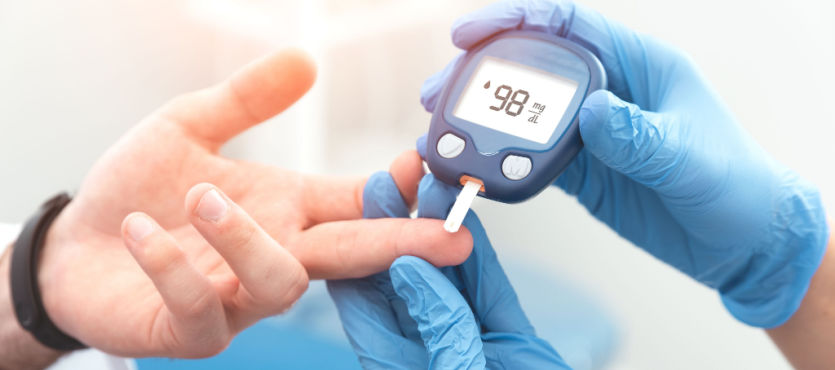You can live an active lifestyle when you take control of your own diabetes care. Still, everyone with diabetes must have regular health checkups and tests. These appointments will give you a chance to ask your doctor or nurse questions and learn more about diabetes.
See Your Doctor
See your diabetes doctor every 3 to 6 months. During this exam, your doctor should check your blood pressure, your weight, and your feet.You will also need to see your dentist every 6 months.
Eye Exams
An eye doctor (called an ophthalmologist) should check your eyes at least once a year. If you have eye problems because of diabetes, you will probably see your eye doctor more often.
Foot Exams
Your doctor should check the pulses in your feet and your reflexes at least once a year. The doctor should also look for calluses, infections, and sores. If you have had foot ulcers before, you should see your doctor every 3 to 6 months.
Routine Tests
Hemoglobin A1C (HbA1C) . An HbA1C lab test reflects the average amount of sugar in your blood over the past 3 months. It shows how well you are controlling your diabetes. The normal level is less than 6%. Most people with diabetes should have an HbA1C of less than 7%. Higher numbers mean that your diabetes control is not as good.
Cholesterol
A cholesterol test measures how much cholesterol and triglycerides are in your blood. You will have the test on an empty stomach after not eating overnight.
Adults should have this test every year. If you are being treated for high cholesterol, you may have this test more often.
Kidney Tests
Once a year, you will need a urine test that looks for a protein called “albumin.” Because the test looks for small amounts of albumin, it is sometimes called a test for micro-albuminuria. You will have more of this protein in your blood if you have early kidney damage due to diabetes. But, the level of this protein in urine can also be higher for other reasons. Your doctor may also check your level of kidney function with a blood test every year.
Type I Diet:
Meal Planning
One of the most challenging aspects of managing diabetes is meal planning. Work closely with your doctor and dietitian to design a meal plan that maintains near-normal blood sugar (glucose) levels. The meal plan should give you or your child the proper amount of calories to maintain a healthy body weight.The food you eat increases the amount of glucose in your blood. Insulin decreases blood sugar (glucose). By balancing food and insulin together, you can keep your blood sugar (glucose) within a normal range. Keep these points in mind:
-
Your doctor or dietitian should review the types of food you or your child usually eats and build a meal plan from there. Insulin use should be a part of the meal plan. Understand how to time meals for when insulin will start to work in your the body.
-
Be consistent. Meals and snacks should be eaten at the same times each day. Do not skip meals and snacks. Keep the amount and types of food (carbohydrates, fats, and proteins) consistent from day to day.
-
Learn how to read food labels to help plan you or your child’s carbohydrate intake.
-
Use insulin at the same time each day, as directed by the doctor.
Monitor blood sugar (glucose) levels. The doctor will tell you if you need to adjust insulin doses based on blood sugar (glucose) levels and the amount of food eaten. Having diabetes does not mean you or your child must completely give up any specific food, but it does change the kinds of foods one should eat routinely. Choose foods that keep blood sugar (glucose) levels in good control. Foods should also provide enough calories to maintain a healthy weight.
Type II Diet:
If you have type 2 diabetes, your main focus needs to be on weight control. Most people with this disease are overweight. You can improve blood sugar (glucose) levels by following a meal plan that:
-
Has fewer calories
-
An even amount of carbohydrates,
-
Healthy monounsaturated fats instead of some carbohydrates
Examples of foods high in monounsaturated fats include peanut or almond butter, almonds, and walnuts. You can substitute these foods for carbohydrates, but keep portions small because these foods are high in calories. Learn how to read food labels to help you make better food choices. Often, you can significantly improve control of type 2 diabetes with moderate weight loss (for example, 10 pounds) and increased physical activity (for example, 30 minutes of walking per day. Some people will need to take medicine by mouth or insulin in addition to making lifestyle changes.
Meal Planning
One of the most challenging aspects of managing diabetes is meal planning. Work closely with the doctor and dietitian to design a meal plan that maintains near-normal blood sugar (glucose) levels. The meal plan should give you or your child the proper amount of calories to maintain a healthy body weight. Having diabetes does not mean you or your child must completely give up any specific food, but it does change the kinds of foods your child should eat routinely. Choose foods that help keep glucose levels in good control. Foods should also provide enough calories to maintain a healthy weight. Regular monitoring of blood sugar (glucose) at home will help you learn how different foods effect blood sugar (glucose) level.

